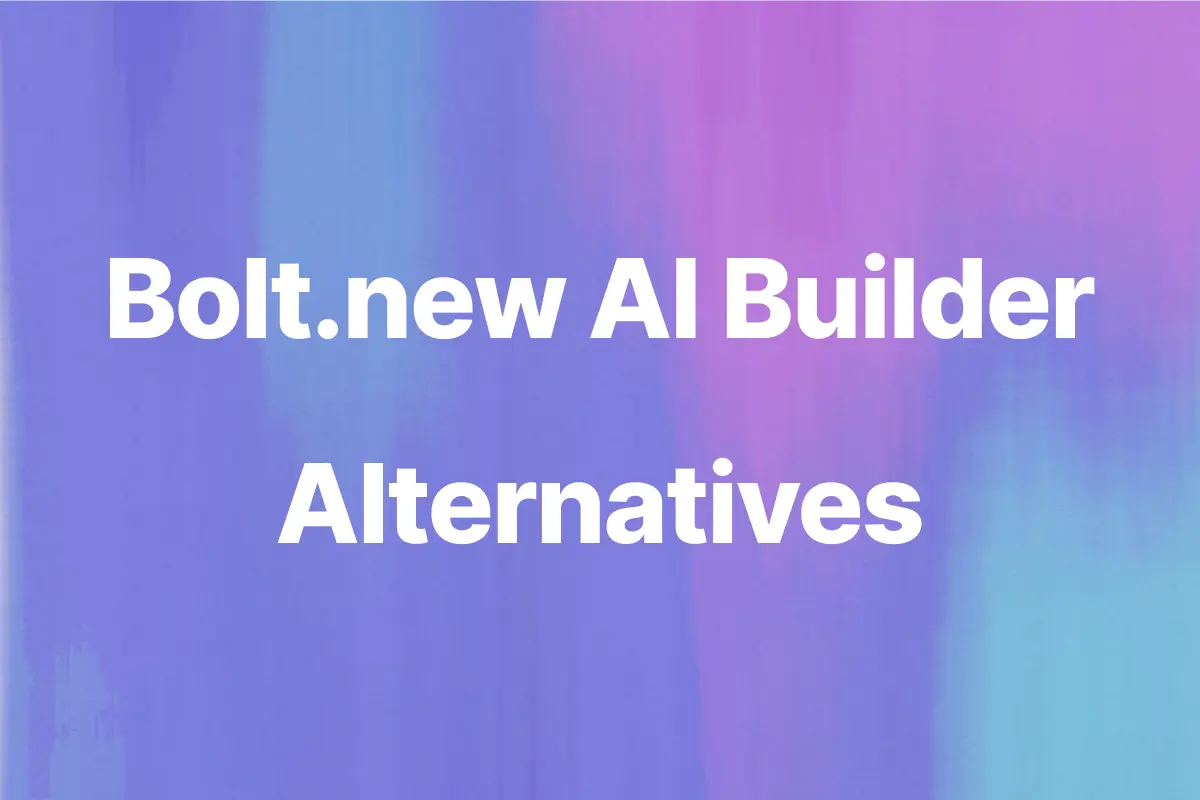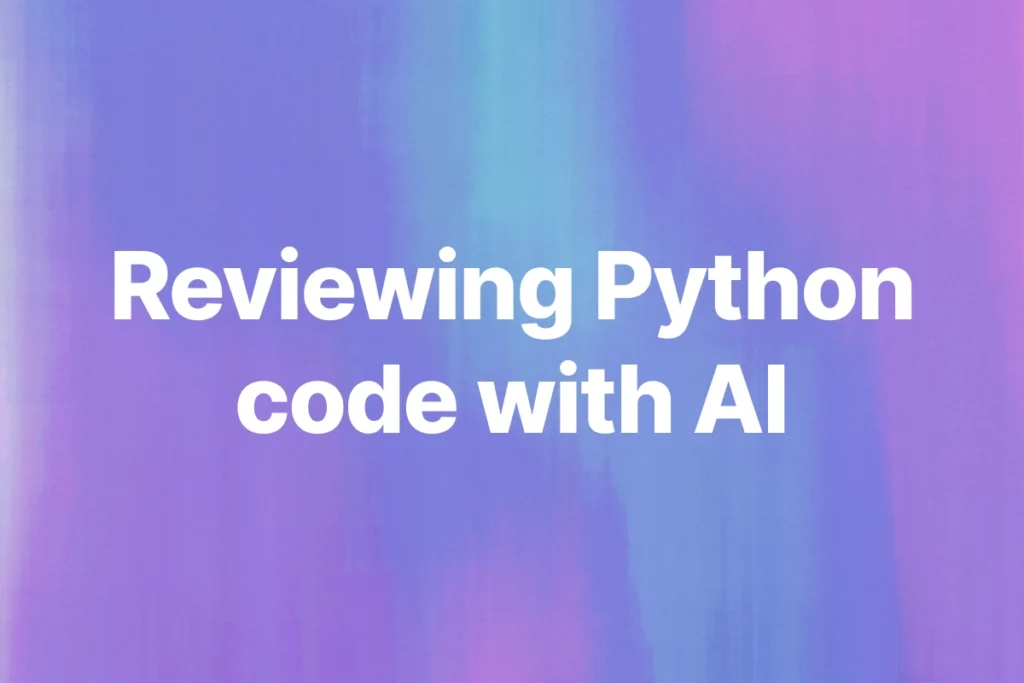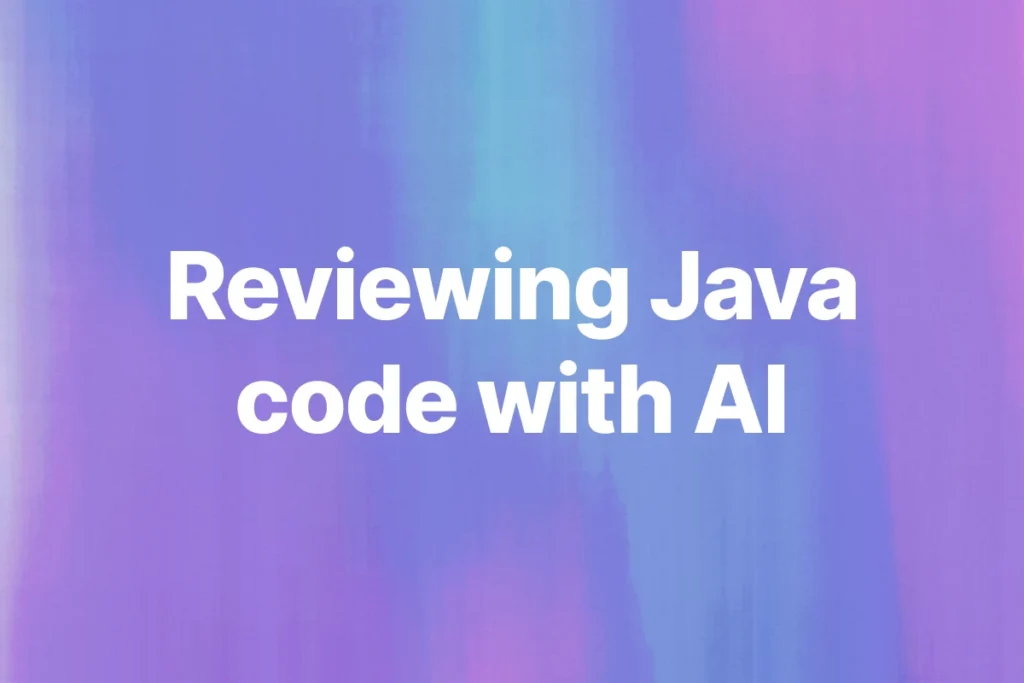After building dozens of prototypes with Bolt.new, I kept running into the same frustrations: limited customization options, template-heavy outputs, and difficulty integrating with existing projects. These limitations pushed me to explore what else was available in the AI-powered development space.
I spent three months testing eight different Bolt alternatives across various project types—from simple landing pages to complex full-stack applications. Some tools impressed me with their flexibility, others disappointed with buggy interfaces, and a few completely changed how I approach rapid prototyping.
Here’s what I discovered about each tool, including the honest pros and cons you won’t find in most reviews.
Understanding what makes a great Bolt alternative
Bolt.new excels at generating complete web applications from natural language descriptions, but it has clear limitations. The best alternatives should offer:
- Faster iteration cycles than Bolt’s sometimes sluggish generation process
- Better code quality with less template-heavy, generic output
- More framework flexibility beyond Bolt’s preferred stack
- Superior customization options for specific project requirements
- Cleaner integration with existing development workflows
My testing focused on these criteria across different project scenarios to find tools that actually solve real development problems.
1. Cursor AI
What it does differently: Instead of generating entire applications like Bolt, Cursor provides AI-powered assistance within a full IDE environment.
My experience: Cursor impressed me most when working on existing projects. While Bolt generates everything from scratch, Cursor understands your current codebase and suggests improvements that actually make sense.
Key strengths:
- Generates code that follows your existing patterns and conventions
- Provides context-aware suggestions based on your entire project
- Offers both autocomplete and chat-based code generation
- Integrates seamlessly with version control and deployment workflows
Where it shines: I used Cursor to add a complex dashboard feature to an existing React application. It analyzed my component structure, styling approach, and state management patterns, then generated new components that felt like they belonged in the codebase.
Limitations: Requires more manual setup than Bolt’s instant environment. You need your own development setup and deployment pipeline.
Best for: Developers working on existing projects who want AI assistance without starting from scratch.
2. Replit AI
What it does differently: Combines Bolt’s instant environment with better collaborative features and multi-language support.
My experience: Replit AI became my go-to for team prototyping sessions. Unlike Bolt’s single-user focus, multiple developers can work on the same AI-generated project simultaneously.
Key strengths:
- Real-time collaborative development with AI assistance
- Supports multiple programming languages and frameworks
- Instant deployment without configuration
- Integrated database and backend services
- Built-in package management and dependency handling
Real-world test: Our team used Replit AI to build a customer feedback dashboard during a two-day hackathon. Three developers worked simultaneously while the AI generated components, API routes, and database schemas. The collaborative aspect made it significantly more productive than Bolt for team scenarios.
Where it falls short: The AI sometimes generates conflicting code when multiple developers make simultaneous requests. The interface can feel cluttered during intensive development sessions.
Best for: Teams doing collaborative prototyping or educational projects where instant sharing matters.
3. GitHub Copilot Workspace
What it does differently: Leverages GitHub’s ecosystem integration while providing Bolt-like application generation capabilities.
My experience: Copilot Workspace surprised me with how well it understands project requirements when you provide clear issue descriptions or feature requests.
Key strengths:
- Integrates directly with GitHub issues and project management
- Generates code that follows GitHub best practices
- Provides automatic pull request creation with generated features
- Understands existing repository context and coding patterns
- Offers built-in code review and security scanning
Practical example: I described a “user authentication system with social login” in a GitHub issue. Copilot Workspace generated the complete implementation including OAuth integration, database models, middleware, and frontend components, then created a pull request ready for review.
Limitations: Requires GitHub Pro subscription and works best with repositories that already have some structure. Less effective for completely greenfield projects.
Best for: Development teams already using GitHub who want AI assistance integrated into their existing workflow.
4. Claude Artifacts
What it does differently: Focuses on generating high-quality, single-purpose applications through conversational interaction.
My experience: Claude Artifacts consistently produced the cleanest, most maintainable code among all alternatives I tested. While Bolt sometimes generates bloated templates, Claude creates focused, purpose-built applications.
Key strengths:
- Generates exceptionally clean, well-structured code
- Excels at creating interactive demos and prototypes
- Provides real-time preview with instant iteration
- Supports complex data visualization and interactive components
- Produces production-ready code with minimal refactoring needed
Standout moment: I needed a complex data visualization dashboard for a client presentation. Claude Artifacts generated a complete React application with interactive charts, responsive design, and smooth animations in a single conversation. The code quality was better than what many junior developers produce manually.
Where it struggles: Limited to single-file applications and doesn’t support backend integration. You need to manually copy code to your development environment.
Best for: Developers who prioritize code quality and need sophisticated frontend applications without backend complexity.
5. Windmill
What it does differently: Specializes in business applications and internal tools rather than general web development.
My experience: Windmill proved invaluable for creating admin panels and workflow automation tools. It understands business logic better than any other alternative I tested.
Key strengths:
- Generates complete business applications with proper user management
- Handles database integration and API connections automatically
- Provides role-based access control out of the box
- Creates workflow automation and approval processes
- Includes audit trails and compliance features
Business application test: I built an employee onboarding system using Windmill. It generated user registration, document upload, approval workflows, email notifications, and admin dashboards. The generated application included features I hadn’t even requested but were essential for real business use.
Limitations: Not suitable for consumer-facing applications or creative projects. The interface looks business-focused by default.
Best for: Developers building internal tools, admin systems, or business process applications.
6. Lovable
What it does differently: Takes a comprehensive approach to full-stack development with iterative refinement capabilities.
My experience: Lovable impressed me with its ability to handle complex, multi-feature applications through continuous conversation and iteration.
Key strengths:
- Builds complete applications with proper architecture
- Supports iterative development through conversational refinement
- Handles complex business logic and data relationships
- Provides version control integration and deployment pipelines
- Creates scalable code structure from the beginning
Complex project test: I described a “project management tool with team collaboration features” to Lovable. It generated the entire application stack: user authentication, project creation workflows, team invitation systems, real-time collaboration features, and a complete dashboard interface. More importantly, I could refine each feature through conversation without starting over.
Where it needs improvement: Can be slower than Bolt for simple applications. The iterative process sometimes requires multiple conversation rounds to get exactly what you want.
Best for: Developers building complex, multi-feature applications who value proper architecture and scalability.
7. Tabnine
What it does differently: Provides AI assistance within your existing development environment rather than generating complete applications.
My experience: Tabnine works best as a coding companion rather than an application generator. It doesn’t replace Bolt directly but offers superior code completion and suggestion capabilities.
Key strengths:
- Learns from your team’s specific coding patterns
- Provides on-premises deployment for sensitive projects
- Supports 30+ programming languages and frameworks
- Offers enterprise-grade privacy and security controls
- Integrates with popular IDEs without changing your workflow
Enterprise testing: I tested Tabnine in a corporate environment with strict data policies. The on-premises model learned our coding conventions and generated suggestions that matched our internal standards perfectly.
Reality check: Tabnine won’t generate entire applications like Bolt, but it significantly speeds up development once you have a project structure in place.
Best for: Enterprise teams or privacy-conscious developers who want AI assistance without cloud dependencies.
8. CodeSandbox AI
What it does differently: Combines Bolt’s instant environment concept with better collaboration features and npm ecosystem integration.
My experience: CodeSandbox AI felt most similar to Bolt but with smoother performance and better package management.
Key strengths:
- Instant development environment with AI generation
- Superior npm package integration compared to Bolt
- Better collaboration features for team development
- Supports multiple frontend frameworks seamlessly
- Provides instant deployment and sharing capabilities
Head-to-head comparison: I built the same e-commerce prototype in both Bolt and CodeSandbox AI. CodeSandbox generated cleaner component structure, handled package dependencies more reliably, and provided a smoother iteration experience.
Minor drawbacks: Less mature than Bolt in terms of template variety. Some AI suggestions feel generic compared to more specialized tools.
Best for: Developers who like Bolt’s approach but want better performance and collaboration features.
Making sense of your options
After extensive testing, here’s how I recommend choosing between these Bolt alternatives:
For existing projects: Choose Cursor AI or GitHub Copilot Workspace. They understand your current codebase and generate code that integrates naturally.
For team collaboration: Replit AI provides the best collaborative experience, while CodeSandbox AI offers good sharing capabilities with better performance.
For code quality: Claude Artifacts produces the cleanest, most maintainable code, though it’s limited to frontend applications.
For business applications: Windmill specializes in internal tools and business logic that other alternatives struggle with.
For complex applications: Lovable handles multi-feature applications with proper architecture better than simpler alternatives.
For enterprise environments: Tabnine offers necessary privacy controls and learns your team’s specific patterns.
The tool that changed my workflow
While testing these alternatives, I discovered that combining tools often produces better results than relying on any single solution. My current workflow uses:
- Claude Artifacts for initial prototyping and high-quality component generation
- Cursor AI for integrating generated code into existing projects
- GitHub Copilot Workspace for team collaboration and version control integration
This combination gives me Bolt’s rapid prototyping capabilities with better code quality and seamless integration into professional development workflows.
Why code quality matters more than speed
The biggest lesson from testing these Bolt alternatives was realizing that generation speed isn’t everything. Tools that produce cleaner, more maintainable code save significantly more time in the long run, even if initial generation takes slightly longer.
This is where Bito’s AI Code Review tool becomes crucial. Regardless of which Bolt alternative you choose, running generated code through Bito’s review process catches issues that human reviewers often miss:
- Security vulnerabilities in generated authentication and data handling code
- Performance bottlenecks in AI-generated database queries and API calls
- Accessibility issues that automated generation often overlooks
- Code consistency problems when integrating generated components with existing projects
Real workflow integration: Generate your application using any of these Bolt alternatives, then run it through Bito’s AI Code Review Agent before deployment. This catches production issues early and ensures your AI-generated code meets professional standards.
I’ve seen too many developers deploy AI-generated code directly to production, only to discover security issues or performance problems later. Bito bridges the gap between rapid generation and production-ready code.
Conclusion
Each of the above mentioned Bolt alternatives offers distinct advantages for different development scenarios. Cursor AI excels in existing project integration, while Replit AI provides superior collaboration features. Claude Artifacts generates the highest quality code, and Lovable handles complex application architecture beautifully.
The key insight from my testing is that no single tool replaces Bolt completely, different alternatives excel in different scenarios. The most productive approach combines multiple tools based on your specific project requirements and team workflow.
Rather than searching for a perfect Bolt replacement, consider which combination of tools best addresses your current development challenges while maintaining code quality and team productivity. Test these alternatives with real projects to discover which ones align best with your development style and project requirements.
The future of AI-assisted development offers multiple paths forward, each with unique strengths that can transform how you build and deploy applications. Choose the tools that enhance your specific workflow rather than trying to replace your entire development process at once.






